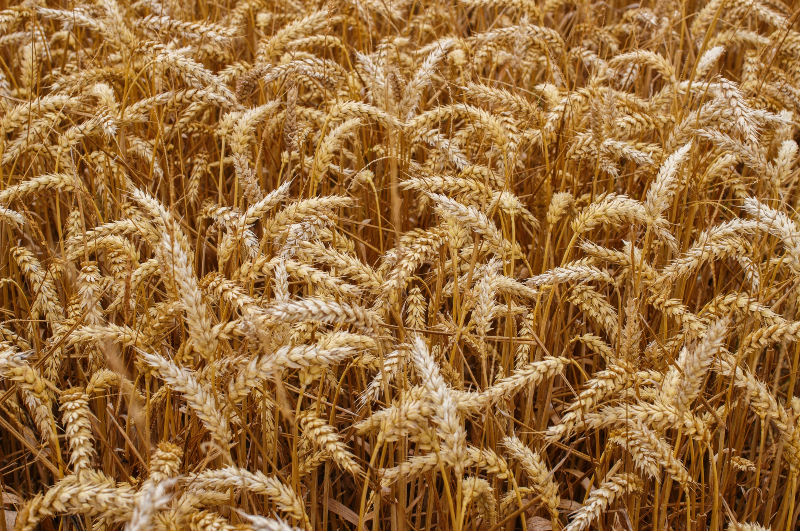

The increasing demand for biofuels, have pushed up global food prices and plunged more people into poverty.
Higher demand for biofuels has also led to more land clearance and habitat loss for wildlife, the main factor driving the loss of biodiversity. It is estimated that the agricultural land acreage in Sub-Saharan Africa (SSA) accounts for only 42.5% of land further complicating any competition over land use for food or biofuel crop cultivation. According to the Food and Agricultural Organization (FAO), the world population will reach 9.1 billion by 2050. This rise in population will be accompanied by rapid urbanisation, an increase in income levels, and changing dietary habits. A 70% increase in agricultural output is needed to meet the future projected demand for food.
How dire is the current situation?
Millions of people in Africa are suffering from extreme hunger as a result of rising food prices, conflict, and climate change in certain parts of the region. The rate of malnutrition is increasing as a result of declining purchasing power, restricted access to a healthy diet, and poor healthcare. Food prices, which account for about 40% of consumer spending in the region, are quickly rising. In Sub-Saharan Africa (SSA), there are close to 114 million people who are severely food insecure. In the Eastern Africa region, 50 million people are at risk. Eastern Africa region has endured substantial climate shocks, undermining people’s ability to feed themselves. Climate change means that it’s far harder to grow food and keep cattle alive. Families have lost their ability to cope. The food production paradigm, which prioritizes a small number of crops for maximum yields, is aggravating the climate crisis.
According to monthly inflation figures from the Kenya National Bureau of Statistics (KNBS), the nation's total inflation rate in August was 8.5%, up from 8.3% in July. The government's target of 2.5 to 7.5 percent, which is aimed and pursued to maintain price stability in the domestic market, hasn't been met by the inflation rate. Further, the Consumer Price Index (CPI), which measures the percentage change in the price of a basket of goods and services that households use, rose by 0.4% from an index of 125.05 in July 2022 to 125.58 in August 2022, according to the most recent statistics. The prices of maize flour increased by 4.7% per 1kg packet as maize grain went up by 2.6% per kilo. International Food Policy Research Institute (IFPRI) projects an increase in poverty by 2.5% as a result of the rising food and energy prices, pushing about 1.4 million Kenyans into extreme poverty. Consequently, the government of Kenya has done away with food and fuel subsidies leaving the prices of food and fuel to be determined by the market forces of supply and demand as a short-term policy strategy to deal with public concerns about the rising cost of living.
South Sudan, a country that is highly dependent on imported food supplies from neighbouring countries, notably Uganda and Kenya is equally grappling with spiraling food prices. Prices for basic foods rose seasonally between July and August by 10% to 15%, remaining approximately 170-235% higher than in August 2021. In Ethiopia, food inflation increased sharply in July reaching a staggering 44% -nearly five times the global average. In Tanzania, the annual headline inflation rate for July 2022 increased to 4.55% from 4.4% recorded in June 2022.
In northern Uganda, where a protracted drought and rife instability have put more than 500,000 people at risk of starvation, more than 200 people perished from hunger in the month of July according to a Reuters report. In the Karamoja region, one of Uganda's poorest and most marginalized districts with a predominately pastoralist community, more than 40% of people are currently going hungry. Karamoja is a representation of a larger global crisis. The impact of a global food and climate crisis that it did not cause is being felt most by the next generation.
What is the backdrop?
The looming food crisis raises questions of ‘food versus fuel’; how much land and other resources are available; how should they be used and what are the priorities? The food crisis in 2007–2008 was partially attributed to biofuel and the morality of using scarce food to make biofuels was questioned. Studies, including those from the World Bank and IMF, concluded that the development of biofuels was responsible for 20–50% of the rise in corn prices during the food crisis. It is thus uncomfortable for wealthy nations to burn crops while millions of others cannot purchase food. For example, in 2021, approximately 155 billion biofuels were made from different crops by the European countries, a wheat equivalent to over 5 billion loaves of bread into bioethanol.
What next?
The debate between food and fuel provides us with an opportunity to reflect on the current ecological crisis that compromises clean energy improvements for improved health along with food access. At stake are the demands for clean energy supportive of human health and the environment and using the arable lands for food crop cultivation. Even as the World Economic Forum reiterates its 55% carbon reduction goal for the EU by 2030, countries and the private sector are being urged to embrace a clean energy transition. This could result in certain suboptimal solutions that are overly dependent on biofuel and have indirect effects on developing countries like those in the Eastern Africa region. There is an absolute urgency to act. It is vitally necessary to increase food access, availability, and affordability across the continent. The problem can only be resolved if we prioritize life. We are calling on the European Commission to strongly encourage its member states to halt the use of food and feed crops in biofuels and refrain from pushing for opening up biodiversity set aside areas for food production until all other options have been exhausted.
Related Articles
Select Payment Method
Pay by bank transfer
If you wish to make a donation by direct bank transfer please contact Fr Paul Hamill SJ treasurer@jesuits.africa. Fr Paul will get in touch with you about the best method of transfer for you and share account details with you. Donations can be one-off gifts or of any frequency; for example, you might wish to become a regular monthly donor of small amounts; that sort of reliable income can allow for very welcome forward planning in the development of the Society’s works in Africa and Madagascar.
Often it is easier to send a donation to an office within your own country and Fr Paul can advise on how that might be done. In some countries this kind of giving can also be recognised for tax relief and the necessary receipts will be issued.

